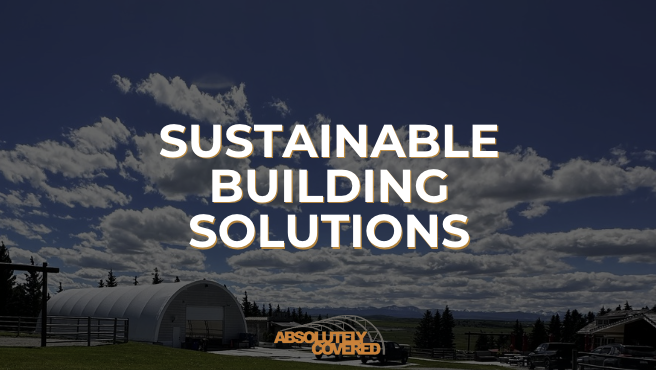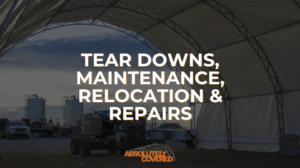
In today’s world, the drive toward sustainability is stronger than ever. Businesses, communities, and individuals are increasingly prioritizing environmentally friendly solutions across all aspects of life, including construction. At Absolutely Covered, we are proud to be at the forefront of this movement with our fabric-covered buildings, which offer a range of sustainability benefits that make them an ideal choice for those looking to reduce their environmental impact, regardless of the industry you are in.
Here’s how our fabric-covered buildings contribute to a greener future.
- Reduced Carbon Footprint One of the most significant advantages of fabric-covered buildings is their reduced carbon footprint compared to traditional construction methods. The production and transportation of materials like steel, concrete, and brick involve high levels of energy consumption and greenhouse gas emissions. In contrast, the materials used for fabric-covered structures are lighter and require less energy to produce and transport, leading to a smaller carbon footprint overall.
- Energy Efficiency Fabric-covered buildings are designed to maximize energy efficiency. The translucent nature of the fabric allows natural light to flood the interior, significantly reducing the need for artificial lighting during the day. This not only lowers energy consumption but also creates a more pleasant environment for occupants. Additionally, the fabric provides excellent insulation, helping to maintain stable indoor temperatures and reducing the need for heating and cooling, further decreasing energy use.
- Sustainable Materials Many of the materials used in fabric-covered buildings are sustainable and recyclable. The fabric itself is often made from high-quality, durable materials that can be reused or repurposed at the end of the building’s life. The frame, typically made of steel, is also highly recyclable. By choosing these materials, we can significantly reduce the amount of waste generated by construction projects and contribute to a more sustainable circular economy.
- Minimal Site Disruption Traditional construction methods often involve extensive site disruption, including excavation, heavy machinery use, and long construction periods. These activities can have a detrimental impact on the surrounding environment, including soil erosion, water runoff, and habitat destruction. Fabric-covered buildings, on the other hand, are quicker to install and require less invasive construction techniques, meaning there is minimal disruption to the site and surrounding ecosystem.
- Long Lifespan with Low Maintenance Fabric-covered buildings are built to last. The high-quality materials used in these structures are resistant to wear and tear, UV radiation, and harsh weather conditions, ensuring a long lifespan with minimal maintenance. This durability reduces the need for frequent repairs or replacements, which in turn reduces resource consumption and waste production over the building’s life cycle.
- Adaptability and Reusability One of the key sustainability features of fabric-covered buildings is their adaptability. These structures can be easily modified, expanded, or relocated as needs change, reducing the demand for new construction. Additionally, if a building is no longer needed, it can often be dismantled and repurposed elsewhere, further extending its useful life and minimizing waste.
As the world moves toward more sustainable practices, fabric-covered buildings offer a powerful solution for eco-conscious construction. At Absolutely Covered, we are dedicated to providing environmentally friendly building options that not only meet the needs of today but also protect the planet for future generations. From reducing carbon footprints to promoting energy efficiency and utilizing sustainable materials, our fabric-covered buildings are a smart choice for anyone looking to build greener.
If you’re interested in learning more about how our fabric-covered buildings can support your sustainability goals, contact Absolutely Covered today. Together, we can build a greener future.










